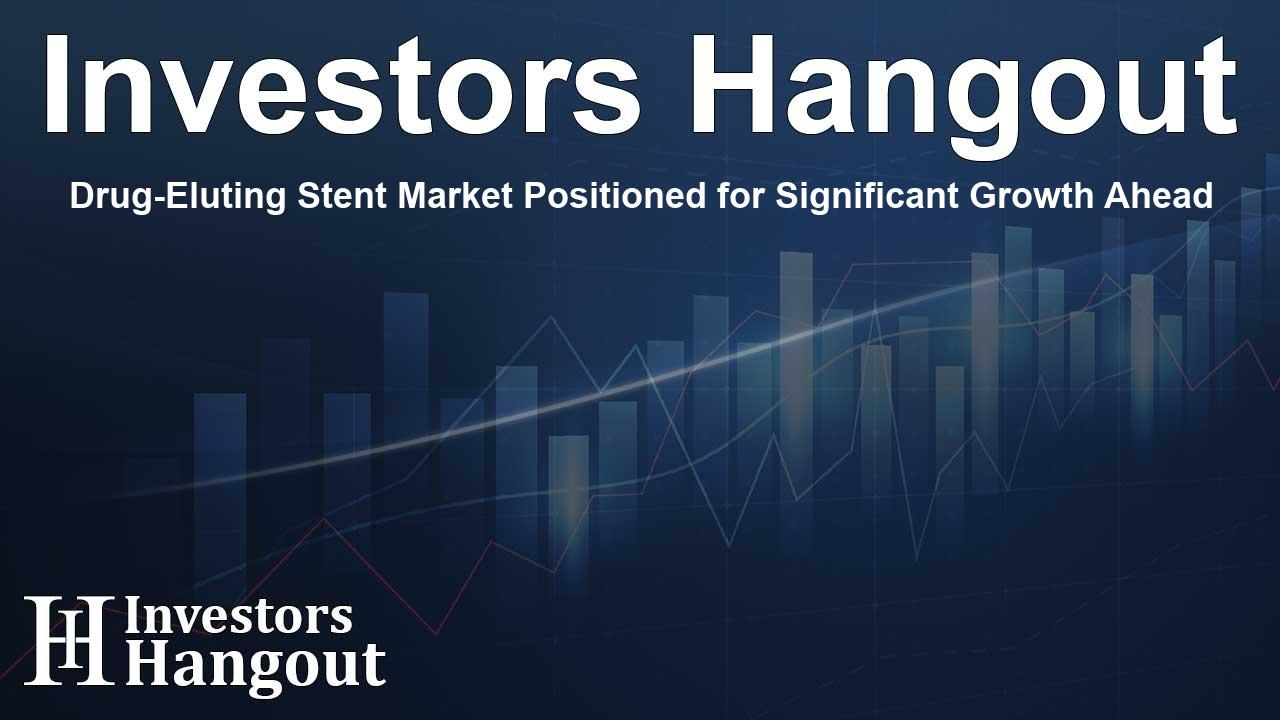Drug-Eluting Stent Market Positioned for Significant Growth Ahead

Global Drug-Eluting Stent Market Growth Projections
The global drug-eluting stent market is on track for remarkable growth, anticipated to escalate from USD 6.35 billion to nearly USD 9.47 billion over the upcoming years, reflecting a compound annual growth rate (CAGR) of approximately 8.3%. This upsurge highlights the increasing demand for minimally invasive cardiac procedures and the development of next-generation stents aimed at minimizing the risk of complications such as restenosis.
Current Trends Influencing Market Dynamics
Surge in Elective Procedures
The pandemic has created a backlog in elective procedures, leading to a surge in percutaneous coronary intervention (PCI) volumes that has exceeded pre-pandemic levels. As hospitals adjust their supply chains to accommodate this increase, many are adopting more adaptable stent planning strategies to meet the evolving demands of patients.
Advancements in Stent Technology
Second- and third-generation drug-eluting stents are gaining traction as they showcase improved safety data and reduced requirements for ongoing therapy. Hospitals are progressively phasing out older stent models, transitioning towards more innovative solutions that balance cost-effectiveness with clinical efficacy.
Wider Reimbursement Policies
Emerging markets are experiencing a broadening of reimbursement policies, which is facilitating the adoption of advanced stent technology. To capitalize on this trend, manufacturers are actively collaborating with health authorities to expedite the regulatory process and demonstrate the economic value of their products.
Market Challenges and Restraints
Safety Concerns
Despite technological advancements, the drug-eluting stent sector faces ongoing challenges, particularly regarding safety. Concerns such as late-stent thrombosis are compelling regulators to enforce longer clinical trials, thereby increasing financial pressures on manufacturers, especially smaller firms.
Pricing Pressures and Market Consolidation
Pricing pressures from group purchasing organizations continue to impact profit margins. Major companies are responding by enhancing service offerings to add value, while local manufacturers are targeting smaller hospitals to avoid the intense price competition prevalent in larger markets.
Insight into Market Segmentation
The drug-eluting stent market can be segmented into various categories, providing a clearer picture of its landscape. Key categories include:
By Coating
- Polymer-Based Coating
- Biodegradable
- Non-biodegradable
- Polymer-Free Coating
By Drug Type
- Everolimus
- Zotarolimus
- Sirolimus
- Paclitaxel
- Biolimus
- Others
By Deployment Technique
- Balloon-Expandable
- Self-Expandable
Geographic Market Overview
North America
North America remains a leader in the drug-eluting stent market, supported by strong insurance reimbursement frameworks and rapid adoption of innovative technologies. Recent shifts towards outpatient procedures are reshaping buying patterns and necessitating new product approvals.
Asia-Pacific
This region is recognized as the fastest-growing market, characterized by the presence of both cost-sensitive local manufacturers and global innovators. While mature markets like Japan focus on refinements in stent technology, countries such as India and Indonesia are actively driving adoption rates.
Europe
The European market is notably competitive, governed by pricing tender protocols and robust evidence-based practices. With minimal variations in clinical outcomes observed across various stent coatings, cost-efficiency and delivery capabilities are emerging as dominant purchasing factors, prompting manufacturers to innovate for complex cases.
Leading Companies in the Drug-Eluting Stent Market
The landscape of the drug-eluting stent market features several prominent players:
- Abbott Laboratories
- Boston Scientific Corporation
- Medtronic PLC
- Terumo Corporation
- Biosensors International Group, Ltd.
- MicroPort
- Cook Group
- Lepu Medical
- Meril Life Science
- Cordis
- Sahajanand Medical Technologies Ltd.
Frequently Asked Questions
What is the projected growth of the drug-eluting stent market?
The market is expected to grow from USD 6.35 billion to USD 9.47 billion by 2030, at a CAGR of 8.3%.
What are the main factors driving market growth?
Increased demand for minimally invasive procedures and advancements in stent technology are significant growth drivers.
What challenges does the market currently face?
Safety concerns regarding stent thrombosis and pricing pressures from group purchasing organizations are key challenges.
Which regions are most prominent in the drug-eluting stent market?
North America, Asia-Pacific, and Europe are the leading regions, each with unique market dynamics.
Who are the leading players in the drug-eluting stent market?
Key players include Abbott Laboratories, Boston Scientific Corporation, and Medtronic PLC.
About The Author
Contact Addison Perry privately here. Or send an email with ATTN: Addison Perry as the subject to contact@investorshangout.com.
About Investors Hangout
Investors Hangout is a leading online stock forum for financial discussion and learning, offering a wide range of free tools and resources. It draws in traders of all levels, who exchange market knowledge, investigate trading tactics, and keep an eye on industry developments in real time. Featuring financial articles, stock message boards, quotes, charts, company profiles, and live news updates. Through cooperative learning and a wealth of informational resources, it helps users from novices creating their first portfolios to experts honing their techniques. Join Investors Hangout today: https://investorshangout.com/
The content of this article is based on factual, publicly available information and does not represent legal, financial, or investment advice. Investors Hangout does not offer financial advice, and the author is not a licensed financial advisor. Consult a qualified advisor before making any financial or investment decisions based on this article. This article should not be considered advice to purchase, sell, or hold any securities or other investments. If any of the material provided here is inaccurate, please contact us for corrections.
